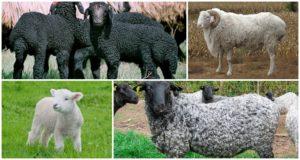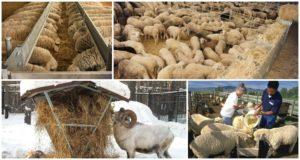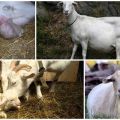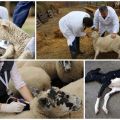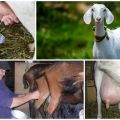How long to wait for the lambing of a long-haired sheep and how is the birth at home
Lambing of sheep is characterized by many features. In order to timely notice the onset of labor, it is important to take into account the behavior of the animal and a number of external signs. This will help to carry out preparatory activities and, if necessary, help the female. Otherwise, there is a risk of complications. They can negatively affect the newborn lamb and the lamb itself. In such a situation, it will not be possible to do without the help of a veterinarian.
What is the birth of a sheep called
The birth of a sheep is called lambing or lambing. In this case, the process of bearing offspring was called "pregnancy". These periods have a number of features. In general, the lambing of a lamb cannot be considered very difficult. In most cases, females do not need human assistance. However, pregnancy should not be allowed to take its course. You need to prepare for the birth of cubs.
How many sheep bears and brings lambs at a time
Labor usually occurs 146 days after mating. This means that the pregnancy lasts 5 months. However, sometimes lambing occurs earlier or later than the specified period. This is influenced by the quality of nutrition and health of the animal.
With an unbalanced diet, the fetus develops slowly. As a result, childbirth occurs later. A similar situation is observed when health is weakened. Therefore, during pregnancy, sheep must be given mineral supplements. These include table salt, crushed chalk, bone meal.
Not only the duration of pregnancy depends on nutrition, but also the number of lambs. Also, this indicator is influenced by the characteristics of the breed and the health of the female. On average, sheep give birth to 2 lambs. Sometimes 3 babies may be born. Some breeds are distinguished by increased productivity. So, Romanov sheep are able to give birth to 5 viable individuals.

Animal behavior before lambing
Before the onset of labor, the sheep behaves restlessly. She begins to move around the pen a lot and constantly look around. Also, the animal's appetite worsens. Immediately in front of lambing, the lamb constantly gets up and lies down.
Preparatory activities
Preparation for childbirth should begin early. It is recommended to cut the hair around the udder 1 month before the expected lambing. 2 weeks before lambing, the sheep are moved to a separate room. It should be warm and spacious. It is important to ensure that there are no drafts there. Full illumination is of great importance. 1 individual should have at least 2.5 square meters of area.
For the successful course of childbirth during the last 2 weeks of pregnancy, it is recommended to control the diet and drinking regime of the sheep. It is important for her to give food that is easy to digest. The sheep must be watered 2 times a day.
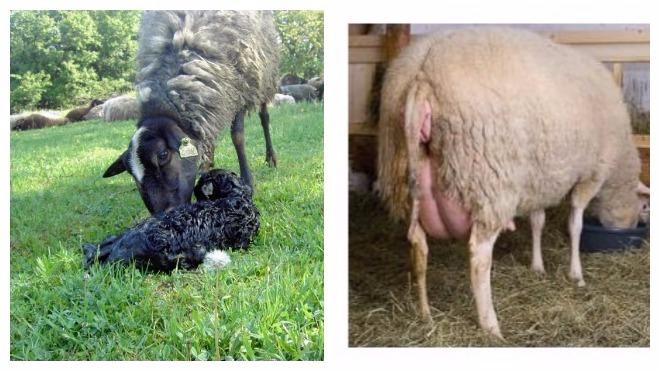
Lambing process and how to deliver
If a sheep gives birth at home, she may need help. Therefore, it is so important to familiarize yourself with the main stages of labor. At the first stage of lambing, the uterine pharynx opens. Under the influence of uterine contractions, the amniotic sac moves into the birth canal. This stage lasts 1-2 hours. At the same time, the contractions intensify and become more frequent, the udder and labia become bright red and swell greatly.
By the end of this phase, a bubble comes out of the vagina, it bursts, after which water leaves. The sheep licks off the amniotic fluid. After that, the next phase begins. It is called expulsion of the fetus and lasts 5-50 minutes. At this moment, the lamb's contractions become more frequent. At the same time, she makes rhythmic movements of the animal.
At this stage, a lamb is seen from the bursting bubble. In the normal course of the process, it should come out with the front limbs and head. In the intervals between contractions, the lamb rises, sniffs and licks the amniotic fluid. When the hooves of the forelegs and the head come out, the baby falls out and the umbilical cord breaks.
After the birth of the lamb, the female cleans his nose from mucous masses and amniotic fluid, and then completely licks it. Mother-calf contact is considered an important aspect of lambing. If the calf is not alone, after 10-45 minutes the female gives birth to the second. Since the birth canal is already open, the stage of fetal expulsion begins immediately. After a certain time, the remaining amniotic membrane comes out. After another 4-6 hours, the afterbirth leaves. At this point, the lambing ends.
When one calf appears, childbirth, on average, lasts 5-9 hours, two - 6-10 hours. With more lambs, the process can take 10-18 hours.
To give birth to a sheep, it is recommended to prepare the following:
- towels;
- iodine;
- hot water;
- sharp scissors - they must be sterile.

Human help is needed if the lambs come out backwards. In this situation, it is important to pull the baby's head out of the amniotic fluid as quickly as possible. Otherwise, he may suffocate. If the lamb comes out sideways, you cannot do without the help of a doctor.
Helping the sheep is required if the umbilical cord has not come off. In this situation, it is recommended to disinfect the scissors with iodine and trim it. This should be done 8-10 centimeters from the belly of the lamb. Then it is recommended to clear the baby's nose of mucus. This is done with a cloth soaked in water. It is also permissible to use a baby mucus sucker. This procedure is required if the female did not do it herself.
What to do after lambing a sheep
After the sheep has sworn, no special action should be taken. Within a few days after giving birth, the female recovers on her own. At the same time, it is recommended to take the lambs from the mother, since she can behave unpredictably. Cubs may only be allowed near the mother for feeding. Toddlers should eat every 3 hours.
If several lambs were born from different sheep, it is permissible to keep them in the same room. The female can find her cub by smell.
A few days after lambing, the condition of the sheep is recommended to be closely monitored. Even with the normal course of labor, there is a risk of complications. Most often, postpartum paresis occurs. This pathology is capable of provoking the death of an animal.
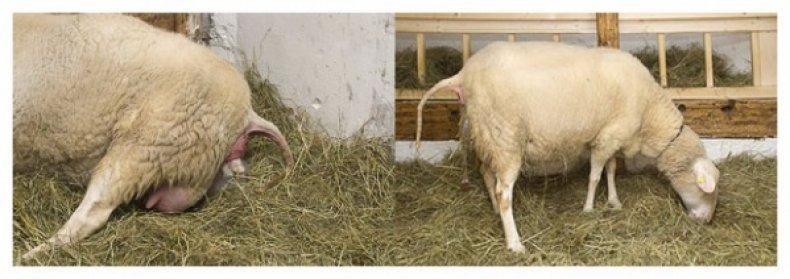
You can stop monitoring 8 days after lambing. During this time, fluid is released from the genitals. This is considered a variant of the norm. If the process lasts more than a week, this indicates damage to the genitals. It should be borne in mind that at first after lambing, the female is reluctant to go for a walk and does not want to graze. This is due to anxiety about the lack of lambs. But after a while it passes.
What complications can there be
Sometimes there are situations when a sheep cannot give birth by itself. This is usually seen when the cub is placed feet first. In such a situation, it is better to involve a specialist. If this is not possible, you must independently deliver the child.
It is recommended that you wash your hands well before attempting to help the sheep. Then you should rupture the amniotic fluid, release the fluid and deploy the baby. It is important to carry out this procedure with extreme caution.
Lack of milk can be another problem after lambing. In this case, the cubs are recommended to be supplemented with milk from another sheep. In the absence of such an opportunity, it is necessary to use cow's milk. However, it is important to consider that it is less nutritious. Therefore, it is recommended to use more product. To control the development of lambs, it is worth keeping a weight gain chart.
Expert advice
In order for a sheep's pregnancy to proceed safely and end in the birth of healthy offspring, it is recommended to pay attention to its diet. It must contain a sufficient amount of mineral additives.
It is also important to notice the onset of labor in a timely manner. This will help provide assistance to the animal. If complications arise, it is recommended to contact your veterinarian.
A sheep's lamb has a number of characteristics. For a successful childbirth, it is important to properly prepare for it. If necessary, it is necessary to provide the female with timely assistance. Full care after lambing is also important.
